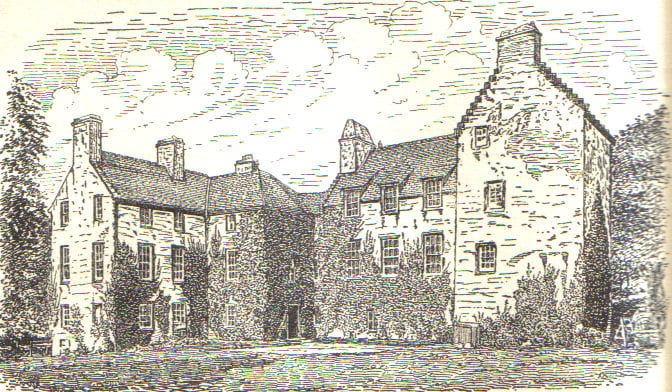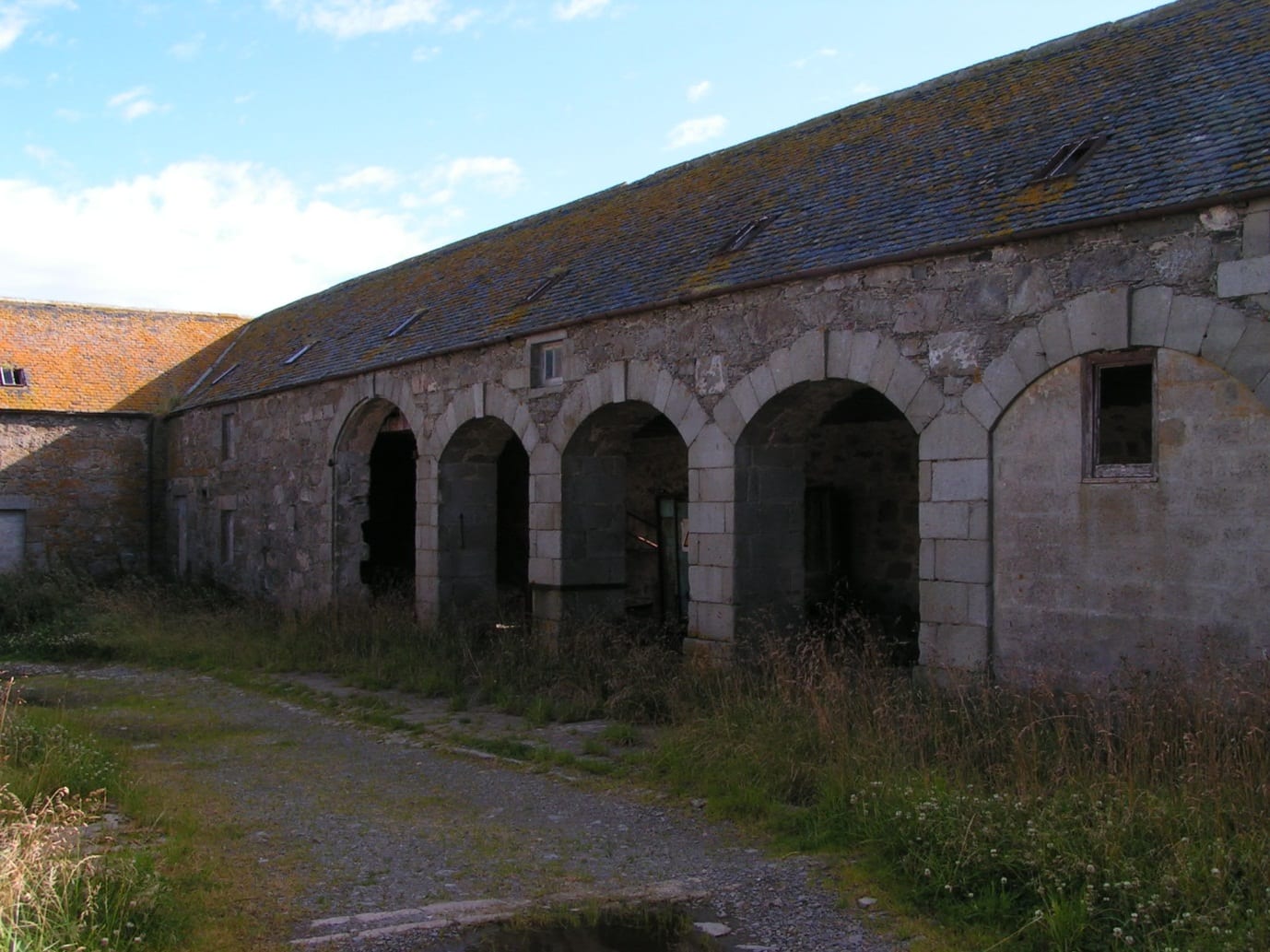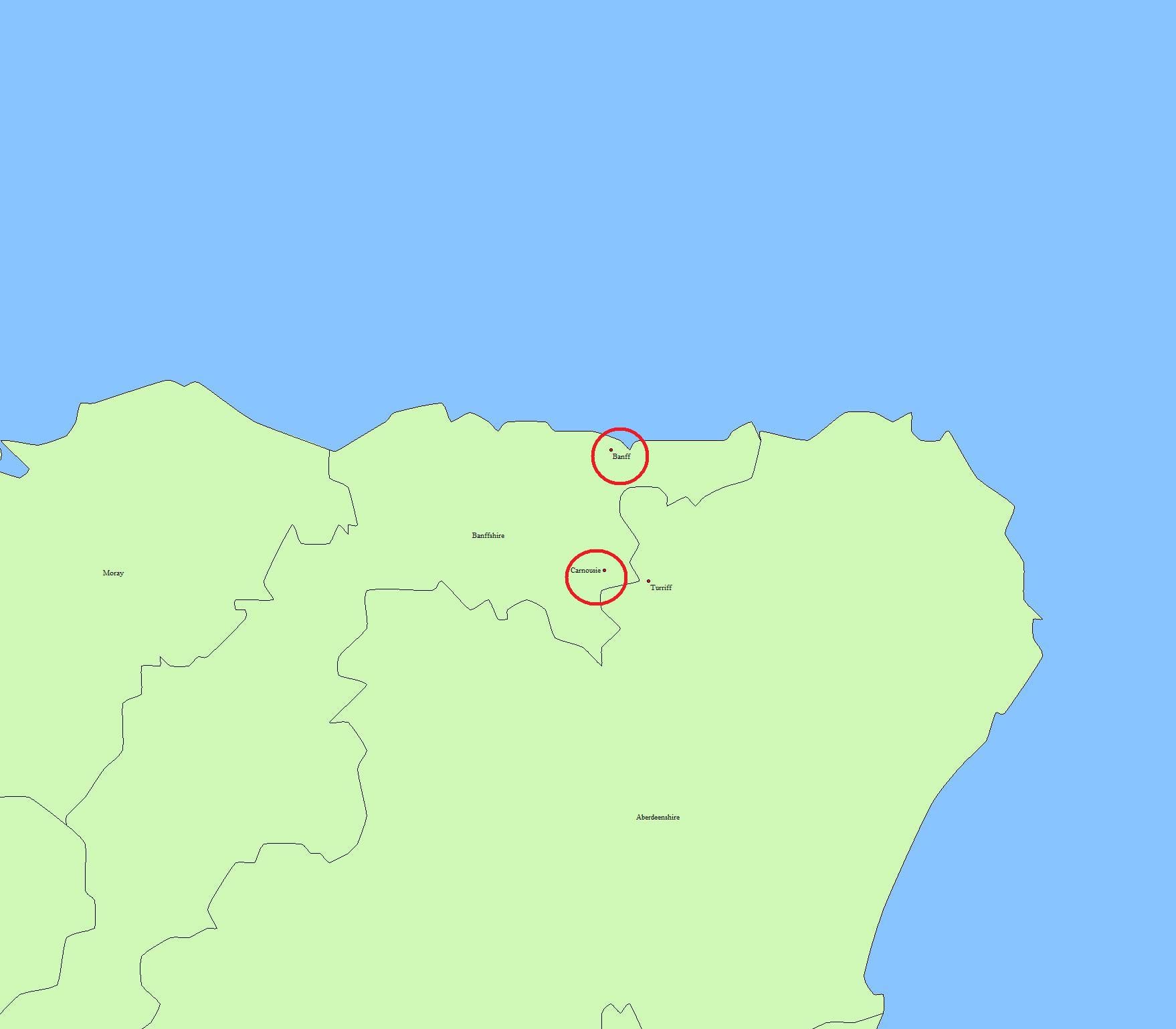Scotland
By March 1784 Patrick had ‘been thinking ever since about buying Land, and if a Man can get a snug spot, with about four per cent for his money, I think it is by much the safest & best way he can lay out his money.’[1] With the help of his brother and uncles, plus other family connections in north-east Scotland, he considered several estates before settling on Carnousie. Patrick’s letters generally adopt a down to earth tone; there is none of the playing with genre that marks the letters of George Bogle, another Scot in Company service in Calcutta in the 1770s.[2] However, he relaxes a little when writing to his brother and in one of his letters he enters into something of a reverie about his potential return:
I would like above all things to have a place of my own where I could retire to and amuse myself in the fields; I know little of farming tho’ fond of that amusement, but above all things I would like to have a good Garden with fruit trees &c and if possible not far from a stream where I could divert myself in fine weather with fishing; to have a hill near where one might go a shooting would make it still more agreeable to my taste and I would like it near the sea if possible. You’ll say I want too much and that all these things cannot be had; indeed I don’t expect it, but as I was on the topick I mentioned them. I abhor a place entirely without wood and water, and would not like to live where I could not see both. To be in the fields in fine weather, to fish, shoot & hunt; with some Books, and now and then the Company of any friends, are the only pleasures which I can hope to enjoy.[3]
These thoughts prompted him to map out what he hoped to do when he got home, and they are far from the ambitions of a ‘nabob’. There were considerable debates at the time about the corrupting influence of Indian wealth on British politics and society.[4] Showy and ostentatious, those who returned with a fortune from India used their wealth, it was alleged, together with the corrupting influences of the ‘Orient’, to subvert British life. This was far from Patrick’s ambitions at that time, as his letter continues:
I never mean to have any hand in Politicks, nor to gain anything by farming, for after all the Bustle I have lived in all my life, if I get only home, I mean to enjoy myself as much as possible; so I have no idea of being so happy as when in the Country, in the way I mention, with, at same time, having it in my power to go into town in the Winter, or even as far as Edinburgh or London for four months in the Year, without finding it incommode me in the money way, I must also (if I mean to be as I would wish) have a Carriage with four good horses and a couple of saddle horses for myself, & two others for my Servants; all the horses but those I ride shall work in the Cart, plow & harrow. My farm shall be no larger than will produce Grain and Hay for the horses & a few Cows, with Corn &C sufficient for my Family, which shall not be very large; with this Farm I shall find (at least I think so) full Amusement for my leisure hours, and at the same time not be obliged to attend to it but when I am inclined to do so for pleasure. I must have a neat warm house with a few rooms to lodge my friends when they come to see me.[5]
These criteria were eventually to be met by the estate of Carnousie in Banffshire (see locations map above, figure 6 – Banff is the higher red circle and Carnousie the lower). It was not close to the sea but in the words of the Earl of Fife (whose brother-in-law, George Hay, was seeking to sell the land) ‘there is a great deal of good ground and great deal to improve’.[6] However, Fife confessed that he had little influence over George Hay, leading Patrick to express his concerns:
altho’ I want an estate and particularly in this country, I would not give more for one than my friends thought prudent and reasonable. I know there is an idea that people from India will give more than any person else, but I assure your Lordship this is not the case with me, as I am determined to be guided by the advice of my friends in cases of this kind where I am no judge myself[7]
However, these scruples were overcome and Patrick purchased the 3,000 acre estate. It came with a tower house of 1577, with a William Adam addition of 1740 (see figure 7 below). While Patrick had repairs done to this building, his main work was the building of the impressive courtyard of farm buildings of 1797 (see figure 5 above, top of page).[8] Entered by a two storey gatehouse with finely worked masonry, Venetian window and belfry, this building contained a row of finely worked cart arches in the east wing. There are seven of these, all round arched with well worked masonry dressings and keystones. The most northerly of the arches is significantly taller, suggesting an entry for a laird’s coach (see figure 9 below). Probably the finest example of its type in an area known for landlord-led agricultural improvement in the late eighteenth century, this was the lasting legacy of Patrick’s application of his Indian fortune.

Figure 7. Old House at Carnousie, showing William Adam addition of 1740. Source: A. Tayler and H. Tayler, The Book of the Duffs (Edinburgh, 1914).

Figure 8. Mains of Carnousie steading. Note gate house in left corner, leading to arches mentioned above and shown below. Image courtesy of Alistair Mutch.

Figure 9. Cart arches and laird’s carriage arch, Mains of Carnousie. Image courtesy of Alistair Mutch.
[1] Gordon of Letterfourie papers, Bundle 2, Patrick Duff to James Gordon, from Fort William, Bengal, 17 March, 1784.
[2] Teltscher, ‘Sentimental Ambassador’, p.83.
[3] Gordon of Letterfourie papers, Bundle 2, Patrick Duff to James Gordon, from Fort William, Bengal, 16 March, 1784.
[4] Tillman Nechtman, Nabobs: Empire and Identity in Eighteenth-century Britain, (Cambridge, 2010), p. 133.
[5] Gordon of Letterfourie papers, Bundle 2, Patrick Duff to James Gordon, from Fort William, Bengal, 16 March, 1784
[6] A. Tayler and H. Tayler, The Book of the Duffs, (2 volumes) (Edinburgh, 1914), p.479.
[7] Ibid., pp. 478-9.
[8] H. G. Slade, ‘Carnousie- Banffshire’, Archaeological Journal, 136 (1979), p. 238.

